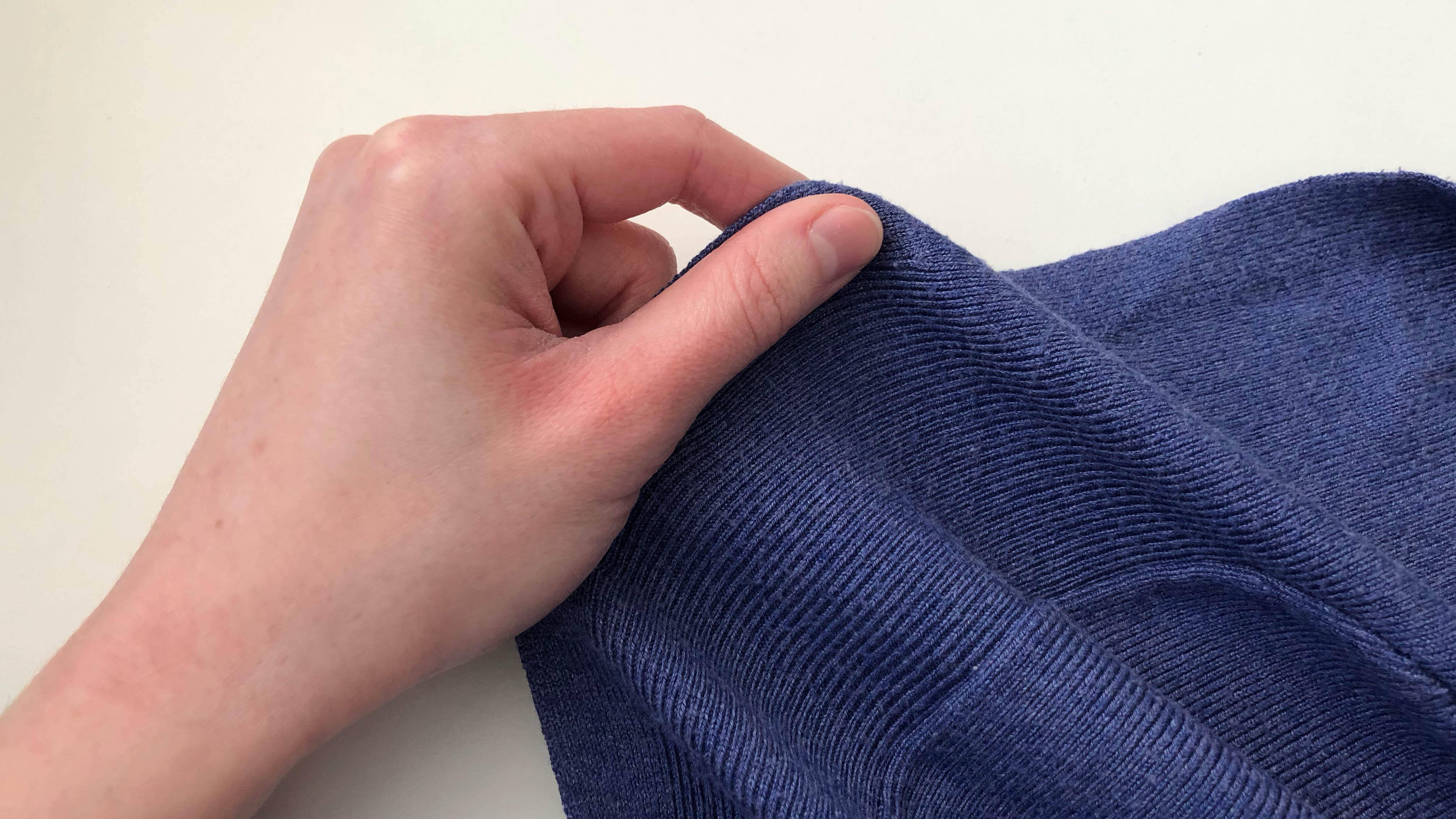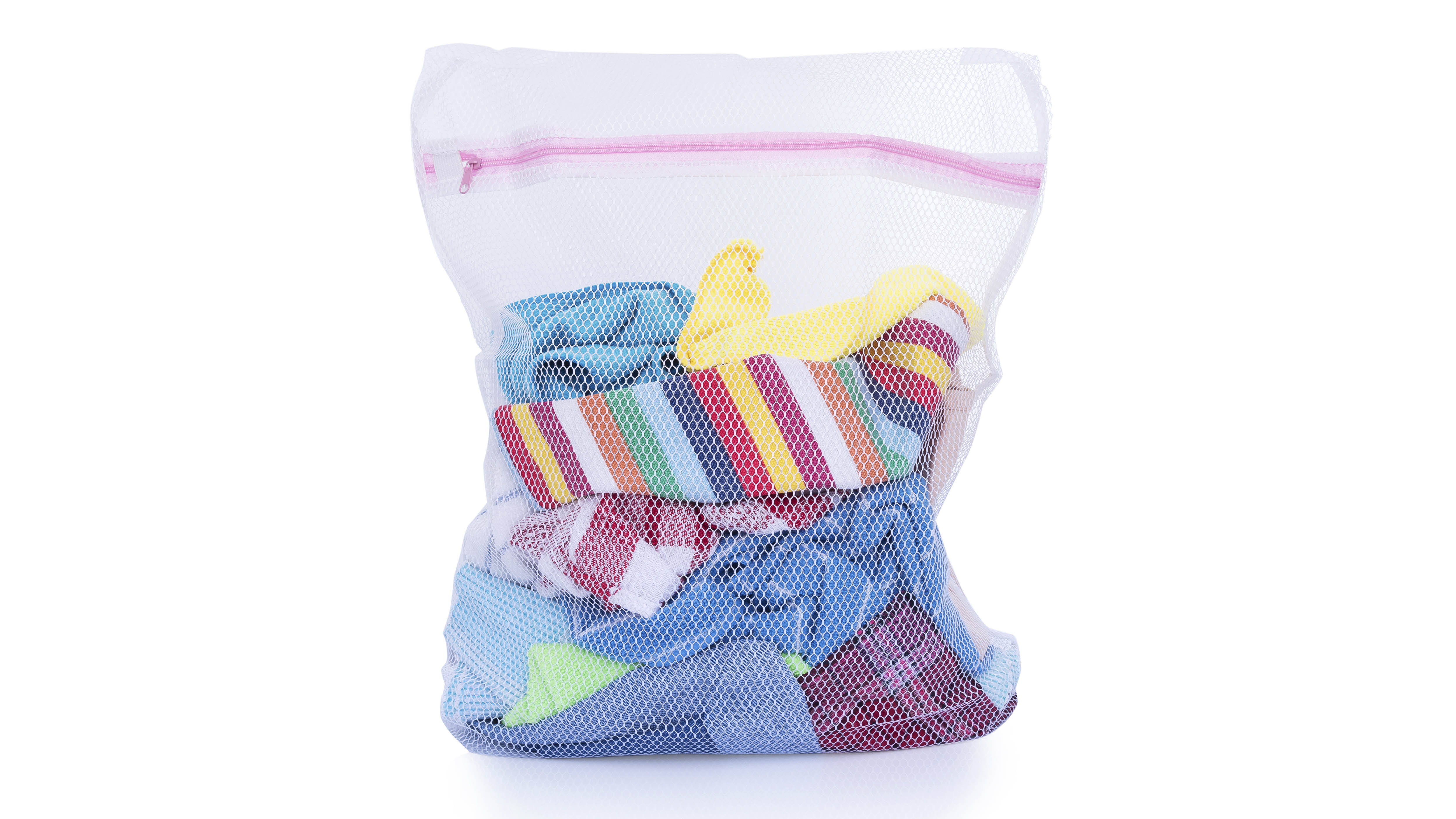How to unshrink a sweater without damaging it
Here’s how to unshrink a sweater, so you can start wearing it again

If you’re looking up how to unshrink a sweater, odds are that the worse has happened. You’ve chucked your precious knitwear into the washing machine, or clothes dryer, and it’s emerged smaller than you remember. It could simply be a matter of shifting down a dress size, or you could be facing more extreme circumstances — something which looks as though it would fit a teddy bear.
Shrinking a sweater can occur even if you use one of the best washing machines, or indeed one of the best clothes dryers. It’s usually a consequence of not following the care label directions. Don’t be dismayed though.
There are in fact ways you can unshrink a sweater without damaging it. Here, we break down exactly what you need to do step-by-step to save your cashmere. Plus, if you learn how to remove pilling, you really can make things look as good as new again. Here’s how to unshrink a sweater.
Plus, here's how to store your winter wardrobe to keep it fresh, and check out these 5 tips to store suits.
How to unshrink a sweater
A basin or bucket
Baby shampoo or hair conditioner or fabric softener or wool detergent
Large bath towel
Cork board (Optional)
Pins (Optional)
1. Don’t make things worse — If you’ve only just chucked your sweater into the washing machine, but you’ve realized you’ve used the wrong settings, try to immediately stop the cycle. Don’t just chance it and assume you can deal with whatever emerges. Unshrinking a sweater takes time and effort, and it’s not always salvageable either. Follow the care label for best wash instructions. If it’s an item you particularly value, hand washing might be best. See how to wash cashmere for guidance.
Likewise, never put your sweater through a drying cycle in a clothes dryer. Even if you use a delicate or cool setting, this too can cause irreparable damage. Always hang the sweater out to dry flat instead.

2. Determine if it can be saved — Unfortunately, not every sweater can be saved. You are going to have to determine this on your own accord based on the extent of the damage. Generally speaking, small scale shrinking can be fixed, but if the item has begun to felt as well as shrink, this can make things much more challenging. Felting refers to when natural fibers shrink and lock together to form a matted, fuzzy appearance. Consequently, stretching the item becomes even more difficult as it has a tight, entangled structure.
Sign up to get the BEST of Tom's Guide direct to your inbox.
Get instant access to breaking news, the hottest reviews, great deals and helpful tips.
If you suspect a small amount of felting, it’s worth still trying to stretch the item out. But, if your sweater appears tiny and fluffy compared to what it once was, it’s unlikely you can save it. In the latter instance, either recycle the material, hand it down to someone it may fit, or use it for crafty projects.
3. Fill a basin with warm water — Fill a basin or bucket with lukewarm water — make sure the water level is high enough to fully submerge your shrunken sweater. You’ve got a couple of options on what you can add. You can use baby shampoo or hair conditioner. Whichever you choose, 1 capful should be enough to relax the fibers and help them stretch.
Alternatively you can raid your laundry room and use fabric softener or a dedicated wool detergent, such as Woolite Delicates Hypoallergenic Liquid Laundry Detergent ($15.19, Amazon). Two tablespoons should be measured out in this case, although you might want to use a little more if you’re dealing with a wool sweater. This material is generally known to be the most difficult to restore. Stir to combine the solution and then add your sweater.

4. Soak the sweater — Gently dunk your sweater in and out of the water, making sure the solution is fully worked into the fibers. Then leave it completely submerged to soak. Small scale shrinking will only require 10-20 minutes, but for desperate times, you can leave it to soak for up to two hours. The longer you leave it, the more relaxed the material will be, ready for stretching.
Try not to leave your sweater soaking for longer than necessary though — otherwise, it could overstretch. If you’re unsure, you can check it intermittently with a gentle tug to feel the general resistance of the fabric. Don’t pull too hard though! You can always repeat the soaking process so better to remove it early if you think it might be ready.
5. Dry the sweater — Once time is up, drain the water, but do not rinse. You need to leave the product in the material to aid with the stretching.
Gently press the excess water out of the sweater. Use your hands to press the material against the basin or bucket — do not wring out the sweater or squeeze it in any way that might stretch out the material. If you do this, you could end up with a very uneven shape. Remove as much water by hand as you can, taking your time to do this.
Lay your bath towel out flat near to the sink or basin, and quickly move your sweater onto the surface. Unfold your sweater so that it’s flat and again press it against the towel with your hands to remove excess moisture. Once you've done that, roll it in the towel to give it a final chance to absorb the moisture. You can repeat this step on the other side of the towel if your sweater feels excessively damp as well.

6. Stretch the sweater — Now your sweater is finally ready to be re-shaped. You’ve got a couple of options here, depending on what you’ve got available at home as well as your preferences. You can either stretch by hand, which is the more traditional method, or use a cork board, which is a little more effort, but is just as effective.
If you opt for the prior method; unroll your sweater and towel and begin gently stretching it into the shape you desire by hand. Don’t force it, or risk damaging it, just be gentle and persistent, holding it up to assess the evenness of the shape. If you pull at one side, remember you need to pull at the other. You should slowly see it molding, a bit like working dough. If the sweater absolutely refuses to budge, you may need to let it soak for longer. Leave to dry flat on a drying rack once you’re happy with it.
Alternatively, you can also use a cork board and pins to re-shape your sweater. To do this, simply lay your sweater out flat on the board, after removing as much of the excess water as you can. Then, stretch it into your desired shape, but only as far as it will comfortably give, and pin it in place. Make sure you don’t hit any delicate seams, or pin too close to the edge though, as you could do some damage. Don’t worry if you need to re-adjust some of the pins as you work your way around, this is pretty normal.
Once you’ve reached your desired shape, let it air dry on the board, away from direct sunlight. Check it intermittently every hour or so, moving the pins if necessary to keep hold of the shape.
7. Repeat if necessary — You should hopefully have seen some progress with the above method, but if not, you can always repeat it. Your sweater should give a little more with each stretching session. Once you’re satisfied, don’t forget to wash the solution away, although make sure you wash your sweater the right way to avoid the same problem again. Follow the care label and hang flat to dry.
How to stop your sweater from shrinking in the future

- Buy a bigger size — Everything tends to shrink a little on the first wash, so don’t buy anything that’s overly tight, because odds are it wont fit once you clean it. Give yourself a little room for some initial shrinking whenever you buy knitwear.
- Always follow the care label — We can’t stress this enough. Always follow the care label instructions for your washing method and settings. Some may recommend machine-washing while others may require dry cleaning. It’s always best to check and follow the directions to give your sweater the best chance of lasting.
- Wash by hand if possible — Generally speaking, washing by hand is the most gentle cleaning method at home. If you’re washing a particularly valuable sweater, stick to this method, even if the care label says it’s suitable for the washing machine. You can alternatively use the dry cleaners for extra precaution.
- Use a laundry bag — If you’re determined to use the washing machine, make sure your sweater is protected by a mesh laundry bag, such as these Mamlyn Mesh Laundry Bag for Delicates ($5.99, Amazon). That way, it can’t get snagged on other items in the cycle.
Noticed other signs of damage to your sweater? Here’s how to get rid of moths in your home.
For more washing tips, tricks, and how-tos, check out our guides on best clothes dryers, this is the cheapest time to do your laundry and save money and what do laundry symbols mean?

Katie Mortram used to be a Homes Editor for Tom's Guide, where she oversaw everything from kitchen appliances to gardening tools, as well as smart home tech. Specializing in providing expert advice for cleaning and home manintenance, she now works as Household Advice Editor for Good Housekeeping.
